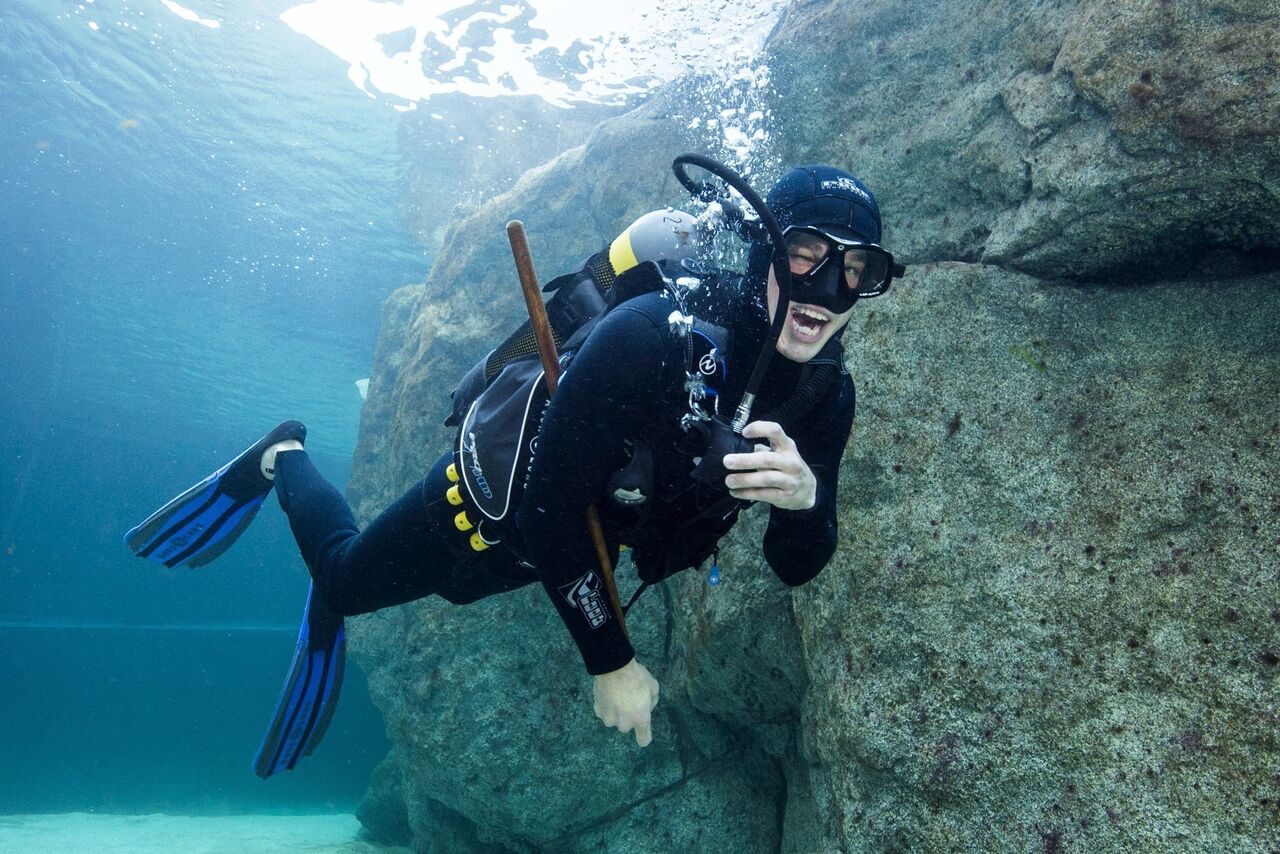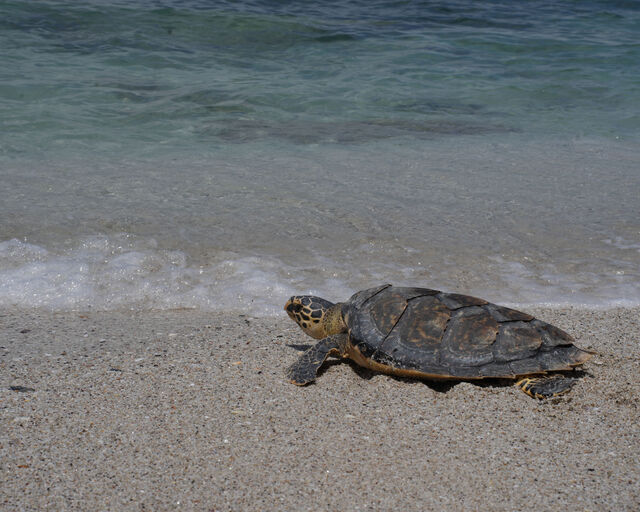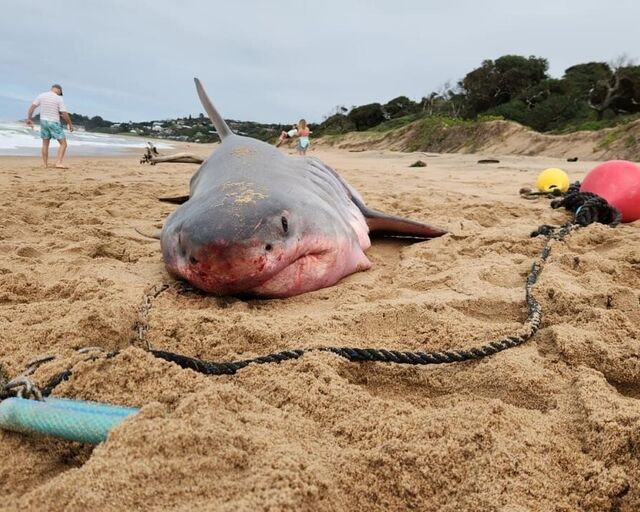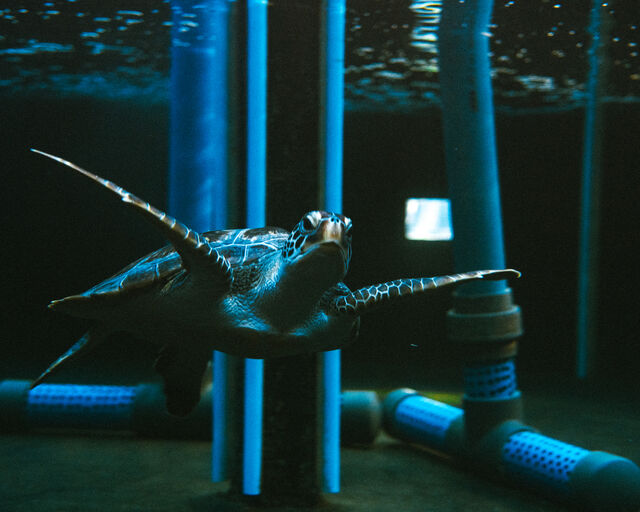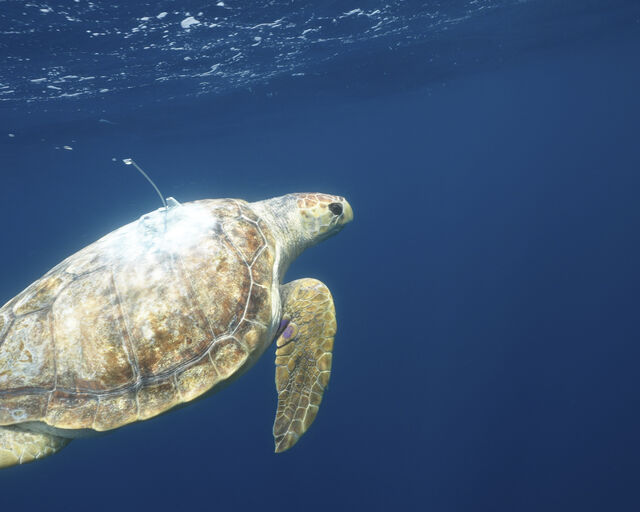To a non-scuba diver, all that equipment could look a bit confusing. The cylinder of air and the mouthpiece makes sense - obviously, a diver needs to breathe. The wetsuit makes sense - obviously, a diver might get cold. The fins make sense - obviously divers need to swim around.
But why do divers need weights? And why do they wear that bulky jacket thing? Well, here a less-obvious part of scuba diving comes in - buoyancy control!
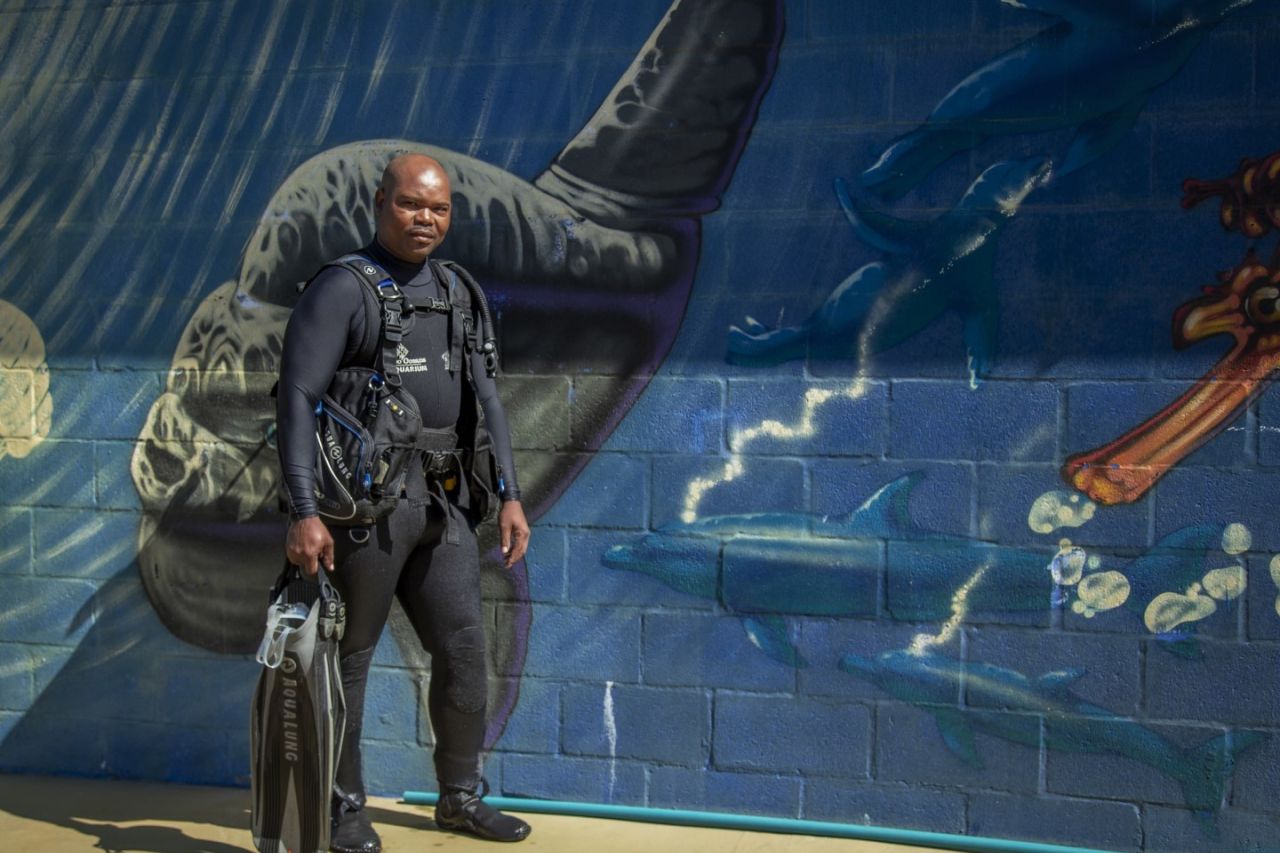
Scuba diving is for everyone - kids as young as 12 (when accompanied by a parent or guardian) can connect with nature this way. Contact our team to find out how you can begin, or continue, your diving adventure at the Two Oceans Aquarium.
What is buoyancy?
Buoyancy is the "floatiness" of an object - basically, the object's density compared to an equally sized amount of water. Something that floats easily, like a boat or foam is said to be "positively buoyant". Something that sinks easily, like a brick, is said to be "negatively buoyant".
Things that are the same density as water are said to be "neutrally buoyant" and because humans are made mostly of water, we are very close to being neutrally buoyant - that's why it's quite easy to stay at the bottom of your pool if you want to.
For a scuba diver, being neutrally buoyant is critical - it's what lets a diver stay at their desired level in the water without needing to use a lot of energy, and it prevents injuries that can be caused by ascending or descending too quickly.
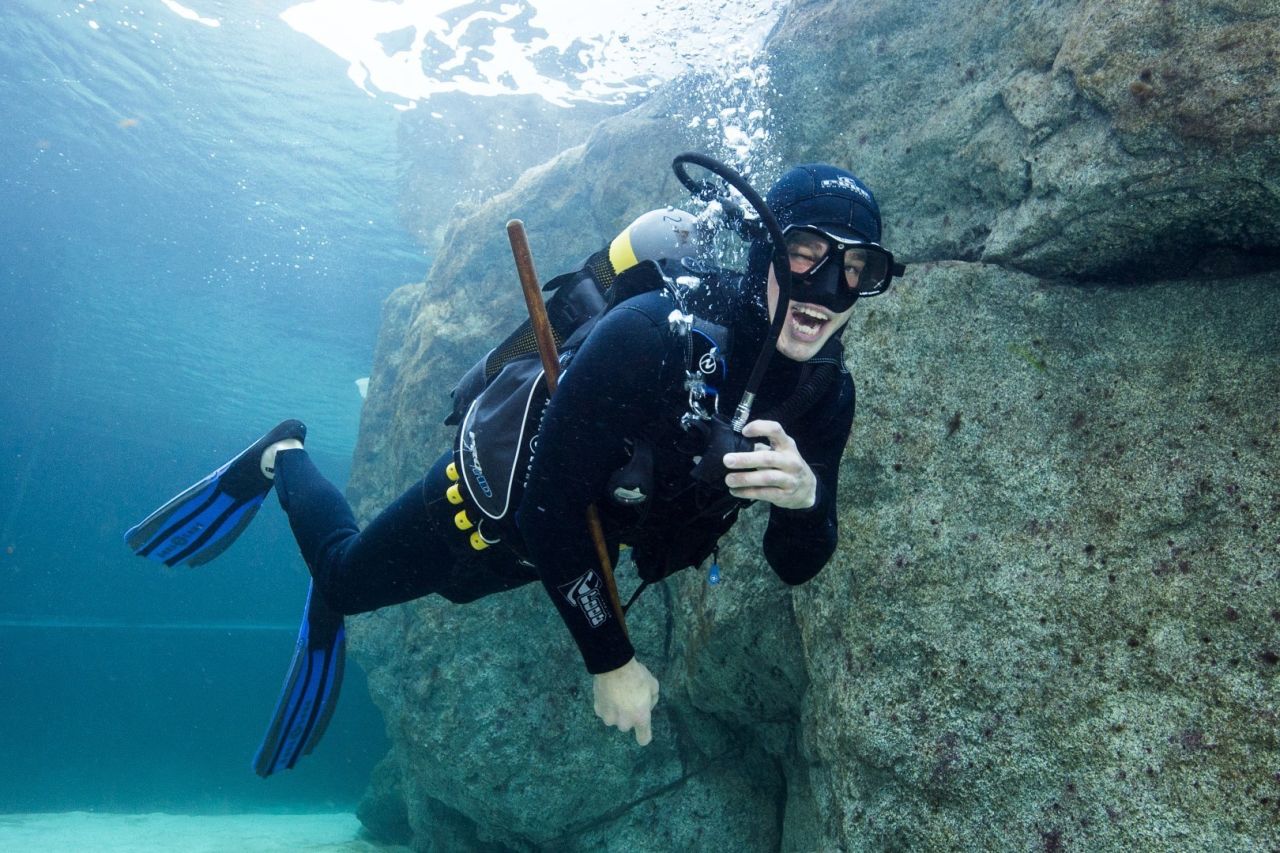
So, if humans are already neutrally buoyant AND divers are carrying a heavy ton of air, why do they need even more weight?
Remember those wetsuits scuba divers wear for warmth? Basically, those suits are made of layers of neoprene foam, which has lots of air bubbles to add insulation, and solid layers to add waterproofing. Those bubbles add warmth, but they also add positive buoyancy, so for relatively thick wetsuits like the 5mm Reef suits we use to handle the cold water at the Aquarium, more extra weight is necessary to overcome it. As a rule of thumb, divers might wear as much as 10% of their body weight to compensate for a thick wetsuit!
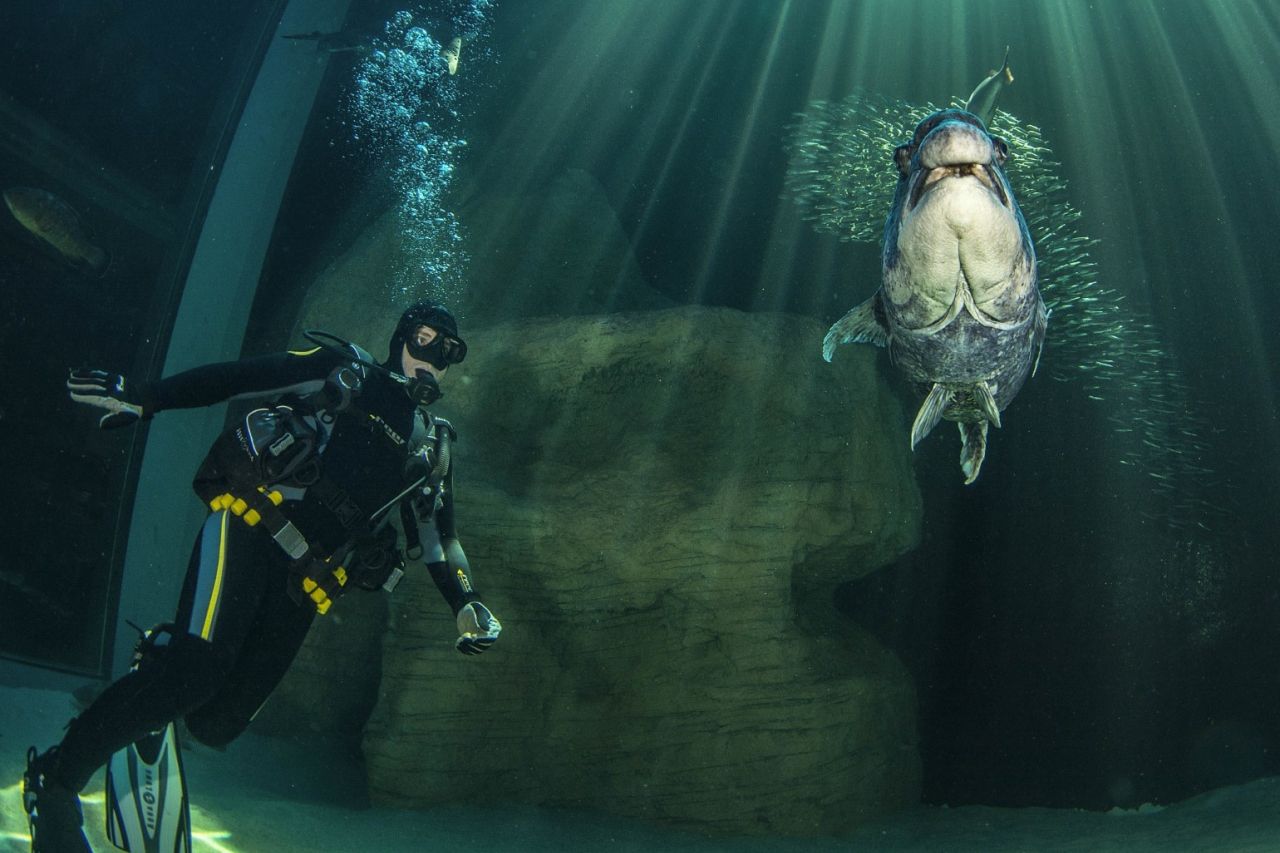
Wait, I know a little bit about physics - won't those air bubbles in the wetsuit all compress once the diver is underwater anyway?
Yes! For every 10m a diver descends, air bubbles will compress to half their original size and thus the wetsuit becomes denser and loses some of its buoyancy. If the diver was perfectly neutrally buoyant at the surface, they will become progressively more negatively buoyant as they descend.
When a diver gets to their desired depth, they can use a small puff of air to inflate their "buoyancy compensator device" or BCD - which is that fancy jacket that almost all scuba divers wear. By balancing the air in the BCD with their weights, divers can become neutrally buoyant again at any depth.
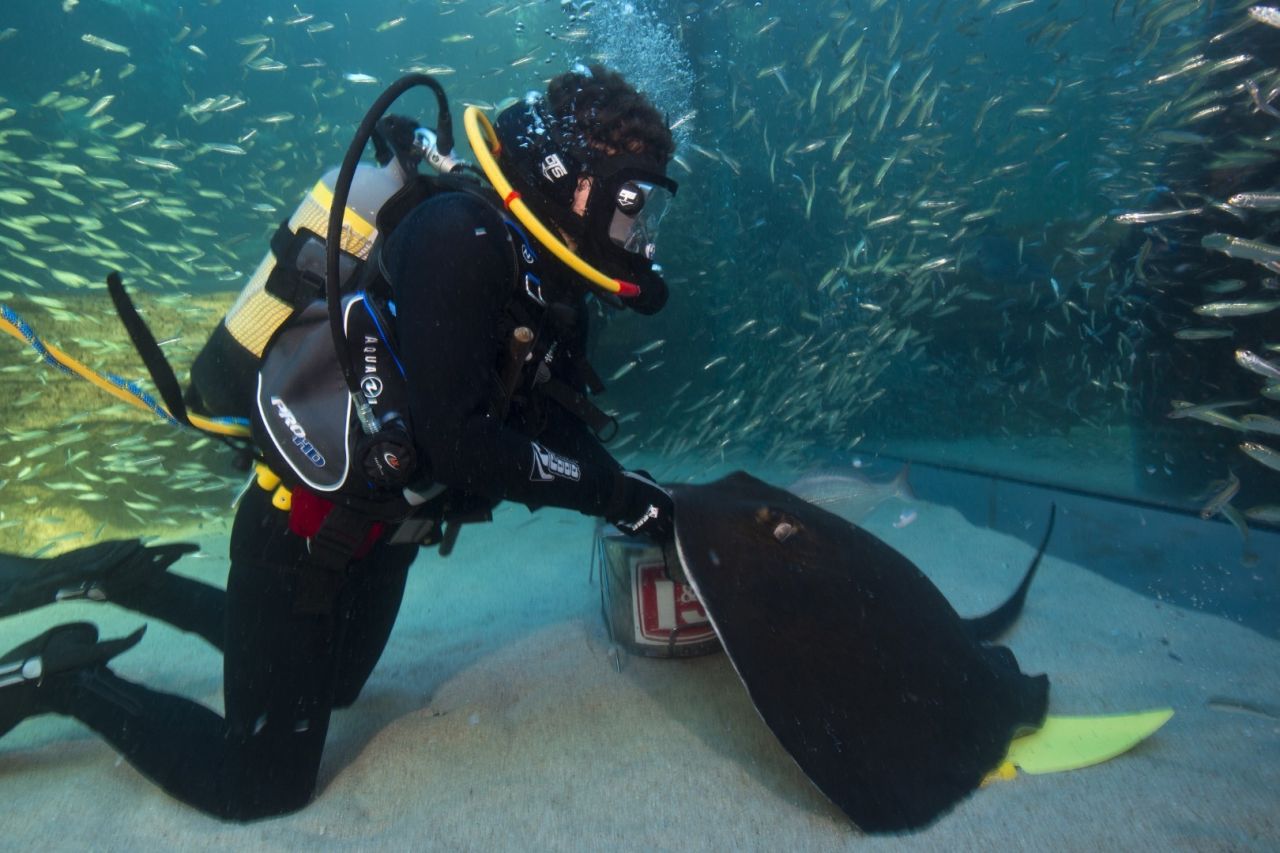
Weights are also a safety feature!
Because of all the training scuba divers go through, it is actually one of the safer adventure sport options out there. But, accidents can happen and sometimes it becomes necessary for a diver to rapidly ascend to the surface, or to get another unconscious diver to the surface quickly.
In these cases, you'd want to get rid of all that weight as quickly as possible! The two most popular ways to wear weights are either attached to a waist belt, or in special pockets in the BCD jacket. In both cases, these are designed with easy-release buckles that allow all weights to be easily dropped by you or a buddy performing a rescue.
What's special about Bright Weights?
Bright Weights are a long-time partner of the Two Oceans Aquarium - but we use their products because we love them. Locally manufactured, the unique "slug" shaped weight system is well-regarded for its ease of use. Those bright colours are not just for decoration either - lead is known to leach into sea water and can harm marine life, particularly in areas often visited by divers (like the Aquarium's exhibits) - the durable plastic coatings on Bright Weights products prevent this leaching, so they are really practical and safe for our Aquarium environment!
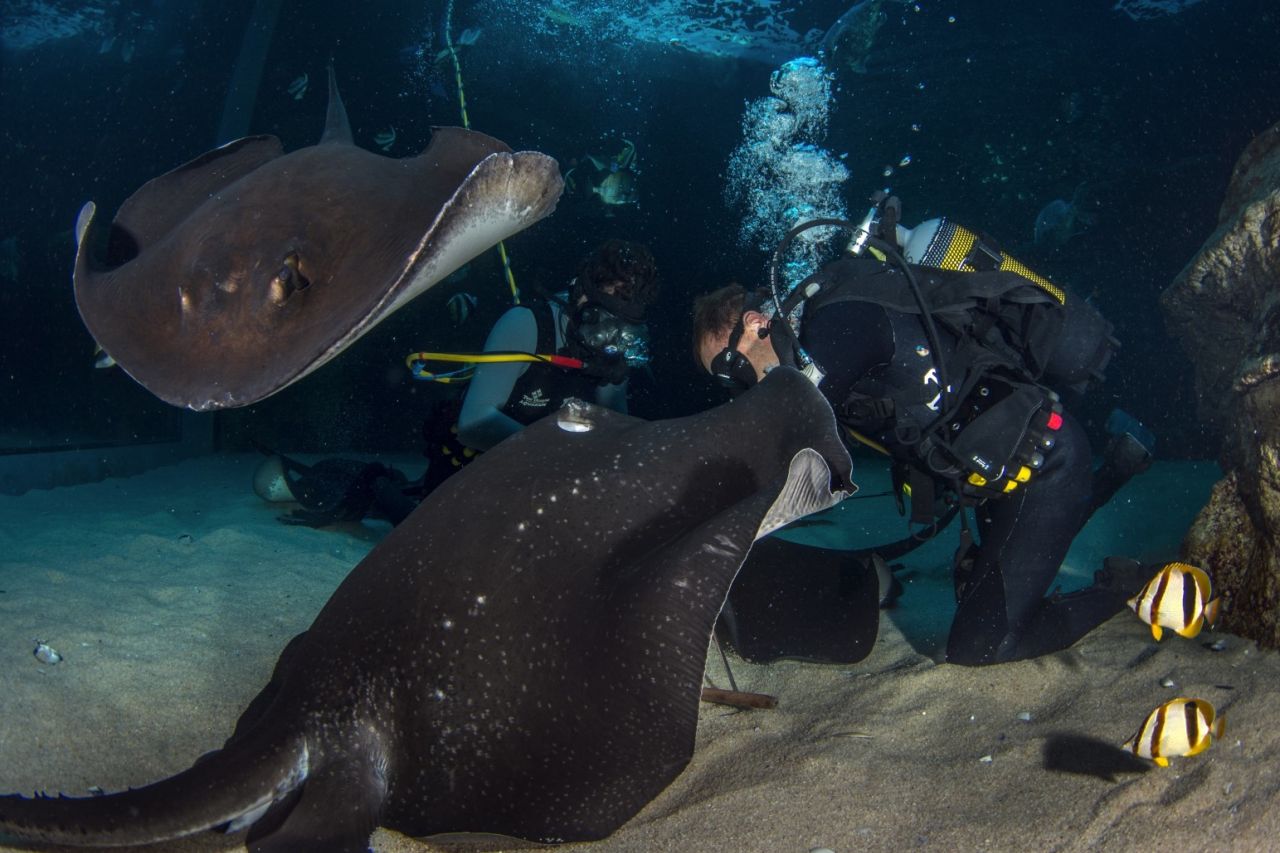
Disclaimer: Buoyancy control is, like all diving skills, a bit more complicated than suggested here! If you decide to take up scuba diving as a hobby, this is one of the skills you'll learn during your certified Open Water Course, but which you'll spend a lifetime perfecting!
